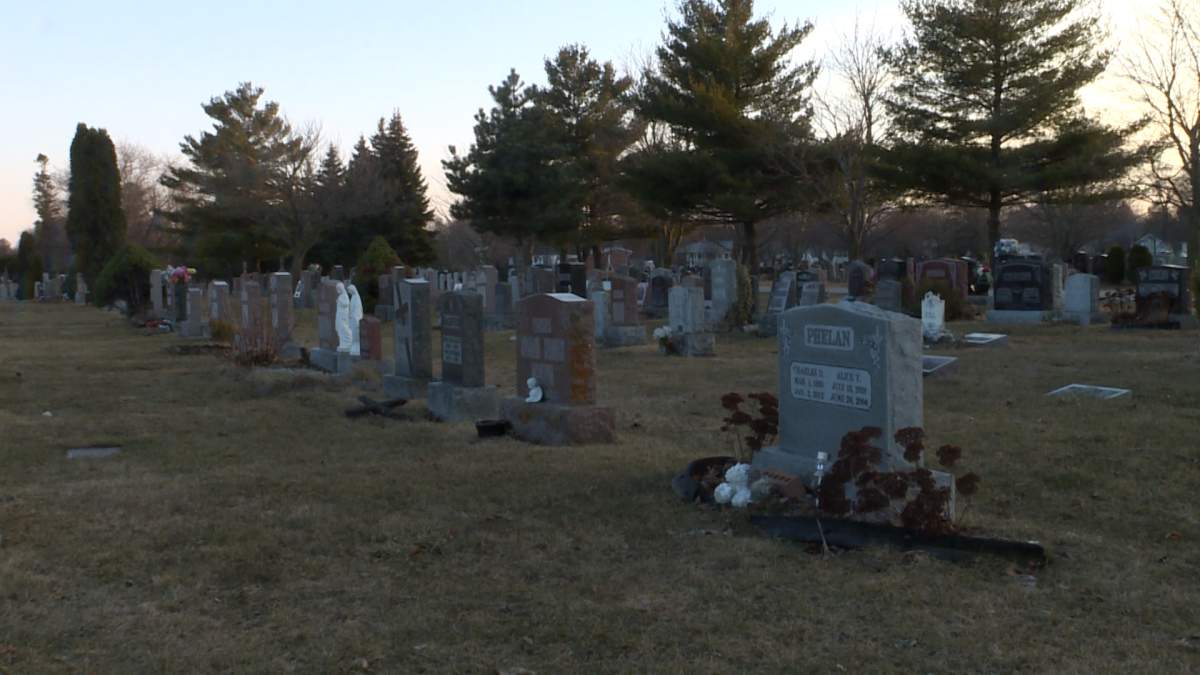Kingston wants to give residents the option of burying loved ones in a more environmentally-friendly way.

City council has endorsed a staff report that recommends several plots in Pine Grove, the only city-operated cemetery, be designated for natural green burials.
Green burials involve no embalming, no vault, no grave marker and the use of biodegradable casket or shroud with minimal disturbance of the ground.
The recommendation to earmark 33 of the 51 remaining plots at Pine Grove for natural burials is a first for Kingston, along with a council-approved study to look into expanding the two-acre rural Kingston cemetery, located at Brewer’s Mills Road and Church Lane, to add more green burial space in the future.
The recommendation flows from a council motion in March of 2021 to further Kingston’s goal of becoming Canada’s most sustainable city by asking staff to review the adoption of eco-friendly burial grounds that focus on reducing the environmental impact on the earth.

Get daily National news
“Minimal but dignified preparation of human remains, this method places the body of a deceased person in the soil or earth in a manner that does not inhibit decomposition but allows the body to contribute to the local ecology and be naturally greenly recycled,” says Peter Huigenbos, the commissioner responsible for business, environment and projects.
The practice of natural green burial involves the deceased being prepared for interment without chemical preservatives or disinfectants like embalming fluid, which destroy the microbial decomposers that break the body down, with only biodegradable coffins, caskets or shrouds.
Protective vaults or outer burial containers that would prevent direct contact with soil are not used.
Graves are often shallower to encourage microbial activity similar to that found in composting. Some natural green burial practices may even avoid the use of any machinery or heavy equipment to dig the grave site. Instead, the grave sites are dug by hand, according to the staff report.
The traditional method of burials isn’t eco-friendly, say advocates of natural burials.
They say embalming fluid and some of the glues used in casket-making contain formaldehyde, a known carcinogen, that breaks down, releasing chemicals into the ground after burial.
“An average four-hectare cemetery holds enough embalming fluid to fill a small swimming pool,” says Huigenbos.
As well, coffins and caskets are made from a variety of materials, most of them not biodegradable.
“It is estimated that roughly 30 million board feet of casket wood is felled every year in North America, some of which comes from tropical hardwoods such as mahogany,” according to research done in Huigenbos’ report to council.
Natural cemeteries also lack typical grave markers. Rather than memorialize each individual plot with a stone marker, natural, greenly sourced, local materials are used to record simple basic inscriptions centrally or in common spaces throughout the grounds, or the GPS co-ordinates of burial locations are recorded.
Even if the environment is not top of mind when deciding the method of a final resting place, advocates say there are financial savings for eco-friendly burials.
“It is estimated that on average, a traditional funeral and burial can cost up to or more than $10,000 which typically includes embalming, a casket, ceremony and burial.”
By comparison, the research presented by Huigenbos suggests natural green burials are up to 50 per cent cheaper by eliminating the need for a casket, embalming and a headstone.
The Pine Grove Cemetery Board has supported the establishment of a designated natural green burial area within its grounds, provided some traditional plots remain available. Council has revised the bylaw that oversees Pine Grove to include both traditional and natural burials.
The natural burial option may show that even in death, people can find ways to minimize their environmental footprint.










Comments